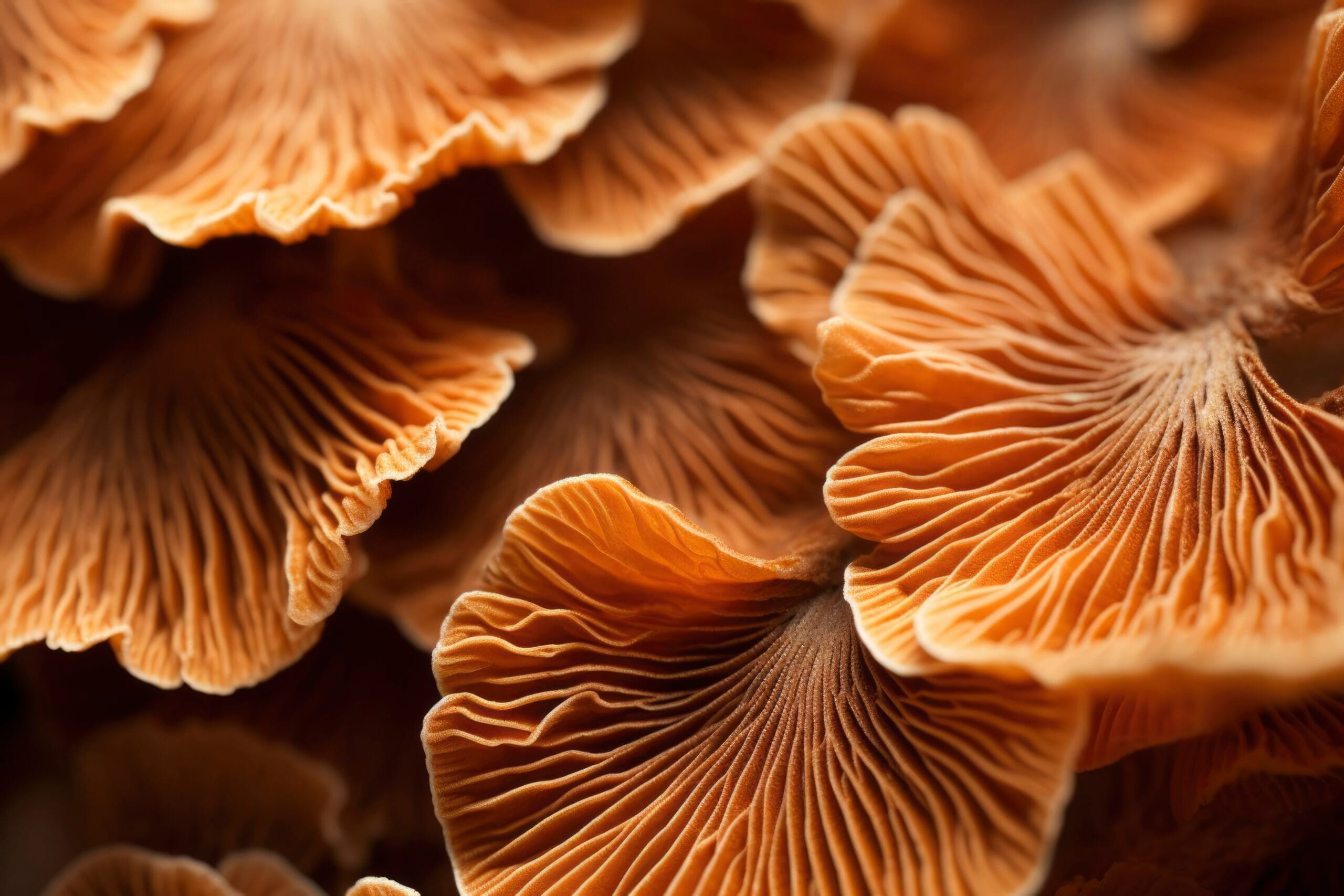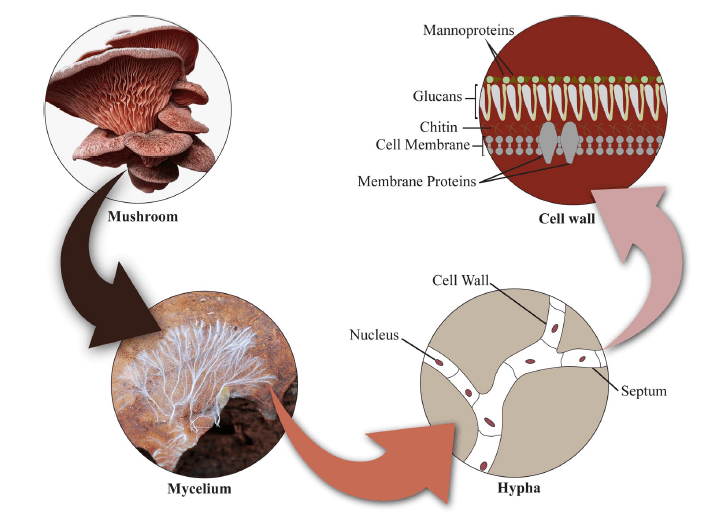
Fungus-Based Products? Here’s the Commercial Future of Mycelium!

- The Utilization of Fungal Mycelium as a Material for Commercial Products
- Fungi and Mycelium Structure
- Mycelium-Based Composite Research
- Mycelium-Based Biocomposite Production Process
- Test Your Innovative Product with IML Research
The Utilization of Fungal Mycelium as a Material for Commercial Products
The rapid growth of the global population has led to an increase in waste production and has accelerated the depletion of natural resources. Poorly managed waste disposal—from sectors such as construction, shopping centers, agriculture, households, and industry—can pollute fertile soil, water bodies, and the air. As the population continues to grow, the demand for construction materials and raw resources also increases.
In recent years, fungal mycelium has gained attention as an eco-friendly alternative material for research and commercial products. Mycelium holds great potential because it can grow without producing hazardous waste and requires minimal energy during production. This article discusses the structure of fungi and how mycelium can be utilized as a material of the future for various products.
Fungi and Mycelium Structure

(Source: Madusanka et al., 2024)
Fungi are eukaryotic organisms that play a crucial role as decomposers in nature, helping break down dead organic matter. Unlike plants, fungi do not perform photosynthesis and instead absorb nutrients from their surroundings. The basic structure of fungi includes:
- Hyphae (fine, branching filaments that form the foundation of fungal growth)
- Mycelium (a dense network of hyphae that absorbs nutrients)
- Spores (reproductive units that spread through air, water, or living organisms)
- Fruiting body (the visible part of the fungus on the surface)
Mycelium contains compounds such as proteins, glucans, mannans, and chitin. To grow, it requires a substrate composed of organic matter such as plant or animal remains, examples include straw, husks, or sawdust. Mycelium offers a wide range of benefits in different fields. Ecologically, it helps decompose organic materials, return nutrients to the soil, and maintain ecosystem balance.
Industrially, fungi are used in food and pharmaceutical production because certain species produce useful enzymes and antibiotic compounds (such as penicillin). In material innovation, mycelium can be processed into biocomposites for furniture, alternative textiles, eco-friendly packaging, and building panels. More recently, mycelium is also being used to create vegan leather for bags, shoes, and jackets.
Mycelium-Based Composite Research
Recent studies have shown that mycelium-based biocomposites are a promising alternative to conventional materials. Since these biocomposites are grown from living organisms, they are generally cheaper and more environmentally friendly. A wide range of properties can be achieved by adjusting the type of substrate, fungal species, and processing methods.
For example, to enhance fire resistance, substrates can be mixed with rice husks and glass fragments. These materials can withstand high temperatures and produce a layer of silica and char when burned. However, one of the main challenges in biocomposite production is selecting the right fungal species. Important selection factors include :
- Growth rate
- Mycelium density
- Ease of cultivation
- Toxicity level
- Growth media cost
- Hyphal structure
Fungi from the Basidiomycota phylum, such as Ganoderma lucidum and Pleurotus ostreatus, are commonly chosen because of their lignocellulose-degrading ability and natural adhesive properties. In contrast, fungi from Ascomycota are rarely used due to their poor binding characteristics.
Mycelium-Based Biocomposite Production Process
Mycelium production can be carried out using fermentation techniques, either in liquid media (liquid fermentation) or solid media (solid-state fermentation):
1. Liquid Fermentation
In liquid fermentation, fungi grow on the surface of a liquid medium, forming a layer of hyphae. When dried, this layer resembles leather, paper, or plastic.
2. In Solid-State Fermentation
In solid-state fermentation, mycelium grows on solid substrates and forms hyphae that extend away from the surface. This method requires careful control of environmental conditions, including temperature (±30°C), humidity (40–99%), and CO₂ concentration (50,000–70,000 ppm) inside incubation chambers.
For applications such as textiles or flexible foams, mycelium is processed to be pliable and durable. Various chemical treatments are applied to enhance flexibility and provide additional protection, such as a coating of Polylactic Acid (PLA), which is absorbed by the mycelium and solidifies as the water evaporates. Fungal mycelium offers an innovative and sustainable solution to current environmental challenges and industrial demands.
Read more:
Polylactic Acid (PLA): How to select the right grade?
As a natural fibrous network, mycelium has the ability to break down organic matter and grow on various agricultural waste substrates. These characteristics make it an ideal alternative material for eco-friendly biocomposite production. With proper fermentation techniques, mycelium can be transformed into diverse materials, including vegan leather, biodegradable packaging, textiles, building panels, and flexible foams. In addition to reducing reliance on synthetic and non-renewable materials, the use of mycelium promotes circularity and efficient use of natural resources.
Test Your Innovative Product with IML Research
If you are developing a product made from natural or bio-based materials such as mycelium, it is essential to ensure its safety, effectiveness, and scientifically proven claims. IML Research is ready to assist with material testing, safety evaluation, and scientific validation to support both research and commercialization of cosmetic and biotechnology-based products.
🔹 Testing conducted according to BPOM and ISO standards
🔹 A team of experts with extensive experience in cosmetics and material research
🔹 Test results that serve as a business advantage and a mark of consumer trust
Free Consultation visit www.imlresearch.com or contact our team to start your product testing process today.
Author: Safira
Editor: Sabilla Reza, Salwa.
Reference:
Madusanka, C., Udayanga, D., Nilmini, R., Rajapaksha, S., Hewawasam, C., Manamgoda, D., & Vasco-Correa, J. (2024). A review of recent advances in fungal mycelium based composites. Discover Materials, 4(13). https://doi.org/10.1007/s43939-024-00084-8



